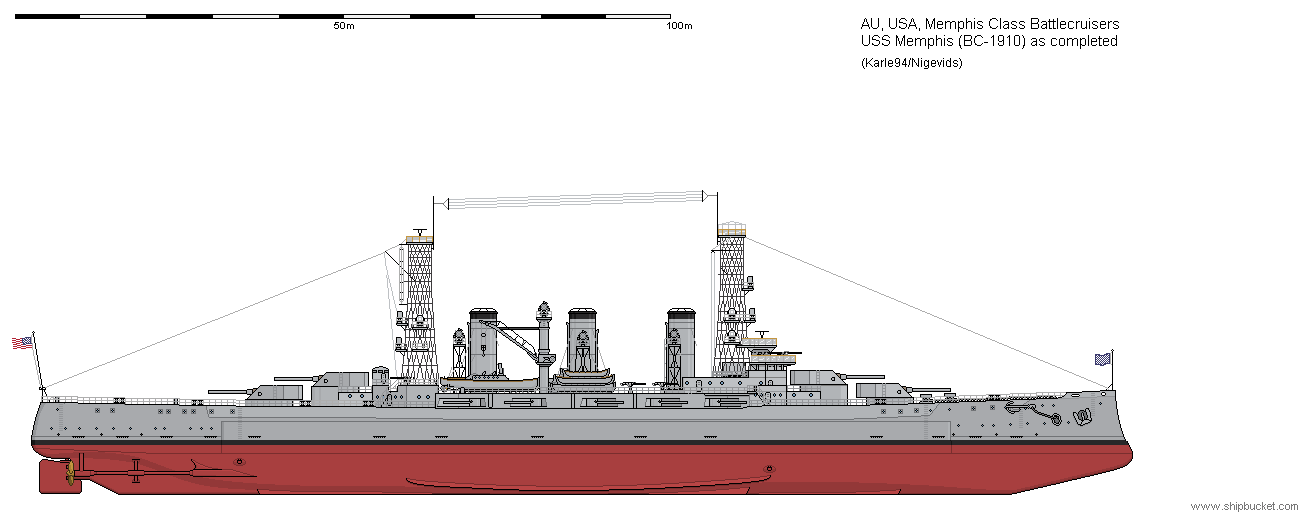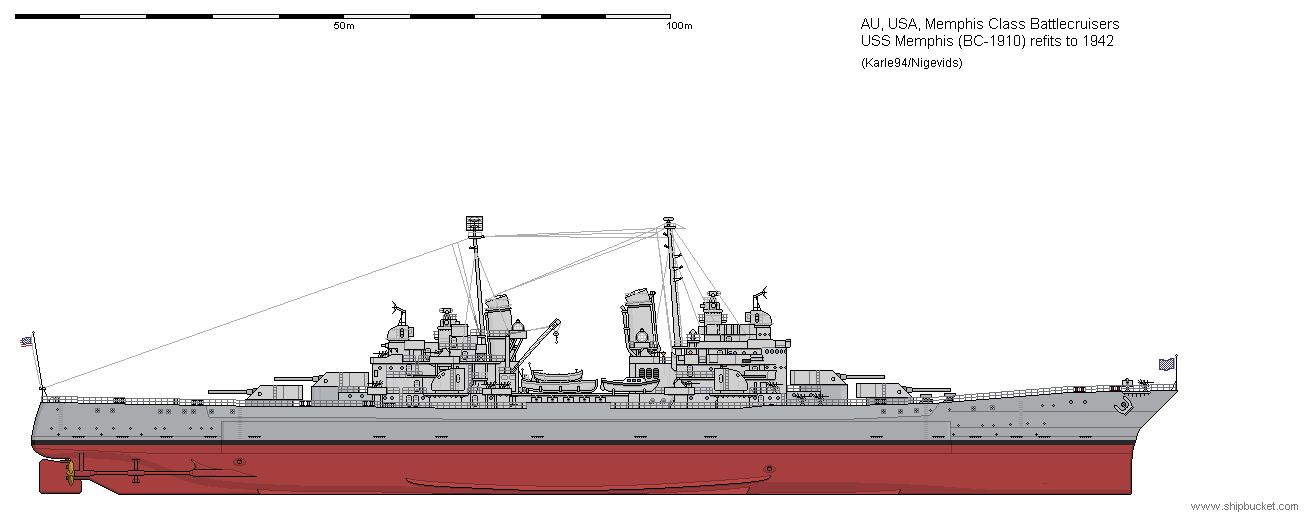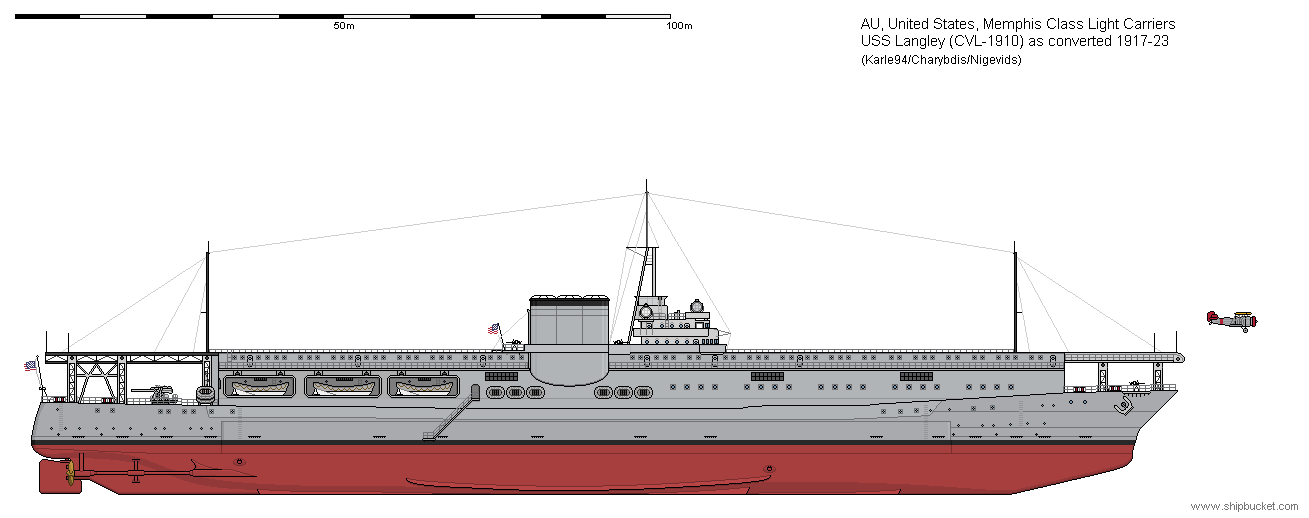I have always liked the idea that the world was fooled by the Royal Navy putting out that the Invincible class ships would be 'Dreadnought' cruisers armed with 9.2" guns. The Germans built the Blucher with 8.2" guns in reply and that ship was outclassed and sunk at the Dogger Bank Battle in a fight with the battlecruisers of the British Fleet. The US Navy stopped producing large cruisers at the armoured cruisers of the Tennessee class with 4x10" guns. The next big 'battlecruisers' built for the US were the Lexington class which were either scrapped or converted to aircraft carriers (Lexington and Saratoga). There is a gap between the US capital ship program that I would like to fill with four 'large cruisers' of an improved Tennessee type. Designed 1905-06, laid down in 1906-07, the four ships were due to be completed in 1909-10. The one thing that these ships will have is the new 'turbine' machinery installed on these ships and one of the Delaware Class battleships of the same age. The ships were classed as scout cruisers when completed but the ships were reclassified in 1912 when the Royal Navy brought in the Battlecruiser designation.

The Memphis class made a fine sight. The South Carolina lineage is plain to see with the superfiring turrets and cage masts.
March 1908 and the Invincible is completed and revealed to the world with its eight 12" main armament. Shock! Horror! where are the 9.2"? The Americans, Germans, Japanese, French and others looked at their, supposedly, equivalent ships with 8.2" to 10" weapons and realised they had been tricked. Their ships no longer looked like world beaters. All were inferior to the British ships. Most of these ships were only half to two thirds complete, but too much had already been invested to scrap them and start again. The whole point of what became the 'battlecruiser' was to catch and dispatch the commerce raiding cruisers as happened at the start of WW1 when Doveton-Sturdee's two battlecruisers caught and sunk Von Spee's armoured and light cruisers at the Falkland Islands. The Memphis and Salem could have performed the same duty just as effectively as the Invincible and Inflexible.
The four Memphis class performed very well in service. Two went to the British fleet and joined the Battlecruiser Fleet at Rosyth with the USS Hawaii in 1917. The other two remained with the Pacific Fleet. None of the ships received any damage during the war, and the Memphis and Salem were used on repatriation duties at wars end.
The period between the end of the war and the Washington Treaty set the tone for the rest of the service lives of the four ships. 1917 and the two ships Langley and Missoula are sent off to Seattle and San Diego for conversion to aircraft carriers. (I did purposely name one of the ships 'Langley' to replace the collier as the US Navy's first carrier.) The other two ships were kept till 1924 when the US Navy had to make the choice to keep the two ships or scrap them. (I will do a WW2 version, even though it would normally end up as these ships being scrapped in favour of more modern ships.)
So two more drawings, one as a carrier and one as a light battlecruiser conversion.

While this conversion looks good. I can't see the US Navy spending the money. The ship(s) may have received damage at Pearl Harbour and receive the upgrades and refits the battleships were given. But 'what if' is my middle name so the impossible often happens and the drawings keep coming.

.jpg)